#funerary relics
Explore tagged Tumblr posts
Text
comic reboot calendiles im kissing u on the mouth btw
#someday i will write the follow up that exists only in my head#where comic canon gj meets up in some random location by accident five years after the comics end#and of course immediately fall in love all over again…#miscellany#funerary relics
7 notes
·
View notes
Text






Anglo-Saxon Cremation Pots from Cleatham Cemetery, North Lincolnshire Museum, Scunthorpe
#anglo saxon#funerary pot#funerary urn#pottery#pot#archaeology#relics#artefacts#ancient cultures#ancient design#ancient living#pottery pieces#Lincolnshire
416 notes
·
View notes
Text
Fan narration of a Relic entry in HSR’s Data Bank. This is the story of both pieces of the Broken Keel set.
Music is “A Long Way” by SergePavkinMusic.
#honkai star rail#hsr#star rail#lore#star rail lore#audio post#data bank#audio#fan narration#relics#broken keel#insumousu#xianzhou alliance#xianzhou daiyu#qingzhu#thalassa#divine fall#funerary rites
0 notes
Text

Amenhotep I or Ramesses II wearing the Khepresh
This striding statuette of a New Kingdom king, depicts the king in a kilt (shendyt) adorned with an elaborate belt, a usekh collar around his neck, and most notably, the "Blue Crown of War", known to the Egyptians as the "Khepresh" upon his head, which is given a realistic glisten by the addition of rounded blue faïence.
The statue is often associated with Amenhotep I, but others, including the Louvre, where this statue now resides, label this piece as Ramesses II. This may be confusing, but it was not uncommon for kings to reuse or usurp relics from past monarchs, in fact Ramesses II is very well known among scholars for his usurping of past monuments and statues, especially those made during the reign of king Amenhotep III.
However, a further reason for this confusion when it comes to identifying this piece may or almost certainly comes from the deification of Amenhotep I within the Deir el-Medina region, where this piece was found.
Both Amenhotep I and his mother Ahmose-Nefertari became deified after their deaths. Ahmose-Nefertari outlived her son by approximately a year at the least, and became worshipped alongside her son for centuries after. Therefore, depictions of both Amenhotep I and his mother Ahmose-Nefertari are found in tombs and among other types of relics and funerary items dating from much later from their life-times. Thus, explaining statues and other depictions of either of the two dating from later king's reigns.
Read more
125 notes
·
View notes
Text
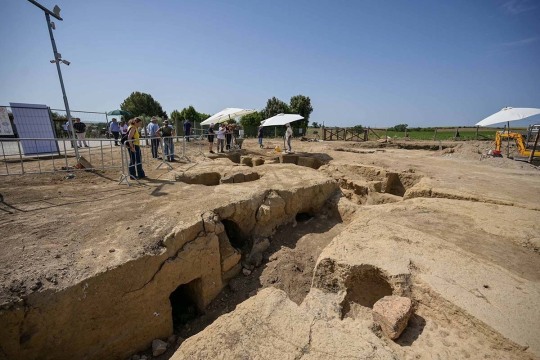
A 2,600-Year-Old Unopened Etruscan Tomb Discovered in Italy
Community leaders and archeologists in central Italy recently gathered in the municipality of Montalto di Castro for the opening of a tomb that dates back more than 2 1/2 millennia, the municipality announced in a social media post last week.
"Today … we witnessed the opening of an ancient Etruscan tomb buried at the Osteria Necropolis in Vulci," the municipality of Montalto di Castro, which sits along the Mediterranean Sea about 100 miles northwest of Rome, wrote Oct. 27 on Facebook, calling the grand unveiling "a day of culture and history" in a translated statement.
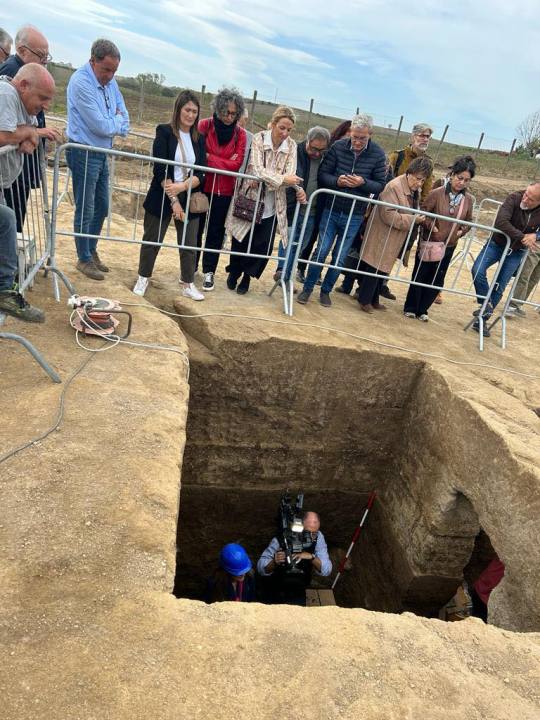

Historians say the Etruscans built their civilization on a portion of the land that is now modern-day Italy, beginning as early as 900 B.C., and operated as a network of city-states not completely unlike the Roman Republic that came after it. The Etruscans dominated Italy until falling, as a result of the Roman-Etruscan wars, to the then-expanding Roman empire around the 4th century B.C.
Vulci, an archaeological site in the northern Lazio region not far from Montalto di Castro, was once a rich Etruscan city. Its ruins have become a popular spot for tourist visits and as well as a place of interest for archaeological excavations.
The tomb discovered there earlier this year was found remarkably intact when it was officially opened at the end of October, for the first time in about 2,600 years, according to the Italian online magazine Finestre sull'Arte, which focuses on ancient and contemporary art. It was opened and explored following the opening of a similar tomb in the area this past April, the magazine reported. Montalto di Castro Mayor Emanuela Socciarelli attended the opening along with Simona Baldassarre, the councilor of culture for the Lazio region, Simona Carosi, the manager of the Superintendency of Archaeology for the province of Viterbo and southern Etruria, and Carlos Casi, the director of the Vulci Foundation, which helped lead the excavation alongside archeologists.

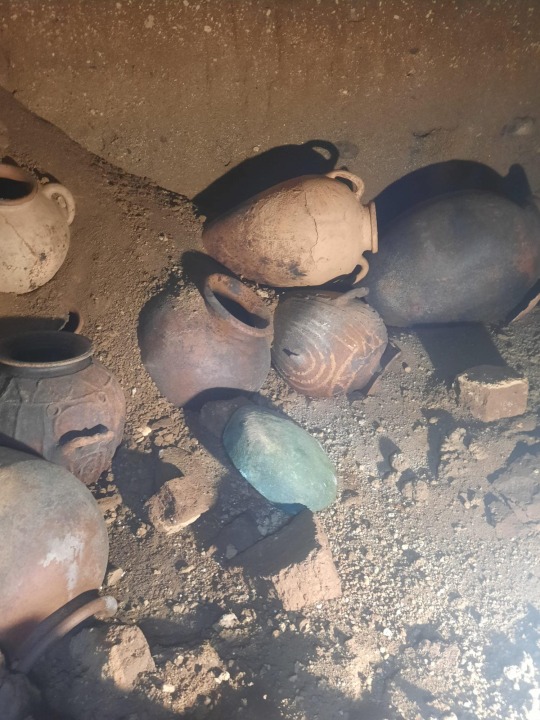
Archaeologists found a collection of long-lost treasures inside the ancient tomb, including a collection of pottery and amphorae, which are tall jars with two handles and a narrow neck typically associated with ancient Greek or Roman cultures. The jars contained wine from Greece, likely from the island of Chios, Finestre sull'Arte reported. It could be a relic of the wine trade happening at that time in history.
Utensils, cups, iron objects, and a variety of ceramics and decorative accessories were also found inside the tomb in perfect condition, as was a tablecloth that may have been used for a funerary ritual offering called "the last meal" or "meal of the dead." A bronze cauldron was also found.
The stockpile of personal belongings found inside the tomb suggests the family for whom it was constructed was probably quite wealthy in their day.
The complex structure and layout of the burial site is also important to archeologists and historians, Casi told the Italian news outlet Il Messaggero, noting that the tomb "appears to be characterized by a partition saved in the rock which creates a passage arch between the dromos, i.e. the short corridor with steps, and the vestibule, from which the two rooms were accessed, the front one and the one on the left: the usual one on the right is missing, evidently because the space had already been occupied by other tombs."
By EMILY MAE CZACHOR.


#A 2600-Year-Old Unopened Etruscan Tomb Discovered in Italy#Montalto di Castro#Osteria Necropolis in Vulci#ancient tomb#ancient grave#ancient necropolis#ancient artifacts#archeology#archeolgst#history#history news#ancient history#ancient culture#ancient civilizations#roman history#roman empire#etruscan history
131 notes
·
View notes
Note
I'm not squeamish and I'm not bothered by bones but I genuinely don't get why you'd put them on display especially in the context of a church.
well the way death is perceived (and by extension human remains, burial practices/rituals and funerary art) just changes a lot throughout history and across cultures and societies doesn't it. it doesn't just depend on religion and the concept of earthly life/afterlife but also on culture (e.g., what is considered respectful), current philosophy, aesthetics, sensibilities etc.
obviously christianity puts emphasis on the afterlife and as a consequence earthly remains are just that – remains. by following that logic it's not disrespectful to put them on display as a memento mori or as a relic. i would also argue that the culture of death in the middle ages (and in general in pre-modern medicine times) was fundamentally different from today's.
to us, death is a concept we are periodically confronted with whereas in the middle ages it was a much more tangible, inescapable reality due to the circumstances. just think about the impact the black death plague(s) had on art and literature (like the whole danse macabre genre for instance).
we don't like to be confronted with the concept of death, so the sight of a human skull can be deeply upsetting to us, especially in contexts where we wouldn't normally expect to see one. they, on the other hand, didn't really have a choice. they saw death everywhere all the time (wars, famines, death in childbirth, infant mortality, illness...). so i guess to them the sight of a human skull was just a reminder of something they were already well acquainted with, rather than something shocking
76 notes
·
View notes
Text






June 7th 1329 saw the death of our most famous King, Robert I, "The Bruce".
Much has been said about King Robert and his prowess in battle, I'll try and highlight some of his other traits and how it was he who was first given the no de plume Braveheart.
The Bruce is said to have spoken several languages, Scots, Gaelic, Latin, and Norman French, and was an avid reader who loved studying the lives of previous monarchs. According to a parliamentary brief from around 1364, Robert the Bruce "used continually to read, or have read in his presence, the histories of ancient kings and princes, and how they conducted themselves in their times, both in wartime and in peacetime.” In his free time, he would recite tales from history, with the likes of Charlemagne and Hannibal being two of his favourite subjects he shared.
Robert the Bruce’s physician, Maino de Maineri, criticized the king’s penchant for devouring eels. “I am certain that this fish should not be eaten because I have seen it during the time I was with the king of the Scots, Robert Bruce, who risked many dangers by eating [moray eels], which are by nature like lampreys," de Maineri wrote "It is true that these [morays] were caught in muddy and corrupt waters.” (Notably, overeating eels was considered the cause of King Henry I England’s death.)
Treasure hunters speculate that in the 14th century, the Knights Templar fled to Scotland with a trove of valuables because they received support and protection from King Robert the Bruce. Thanks to his help, they say, the Knights were able to hide gold and holy relics—from ancient Gospel scrolls to the Holy Grail—in secret spots across the country, including in Rosslyn Chapel and it's not just through the Da Vinci Code, I remember my mum talking about the Holy Grail possibly being hidden within the Apprentice Pillar.
After the death of his second wife, Elizabeth de Burgh, Robert the Bruce decreed to give the Auld Kirk in Cullen, Scotland—now the Cullen and Deskford Parish—a total of five Scots pounds every year. That's because, in 1327, Elizabeth had died after falling off a horse, and the local congregation generously took care of her remains. Robert was so touched by the gesture that he promised to donate money “for all eternity.” To this day, his bequest is still paid to the kirk.
The Kirk was not the only thing to benefit from The Bruce. He moved about Scotland he was a frequent visitor to Aberdeen , his first arrival being in 1306.
In the month of September 1319, King Robert, had again visited the city, where he stayed for some time, lodging in William the Lion's Palace in the Green.
The citizens of Aberdeen , many of whom were his former comrades-in-arms, gave Bruce a tremendous welcome. The King went south well pleased with the reception he had received, and at a Parliament in Berwick on 10th December 1319 , made his most generous benefaction to Aberdeen . He gave the burgesses in perpetual feu, and for a nominal payment of £213:6/8d, the whole of the Stocket Forest . From this remarkable gift the city's ‘Common Good Fund' may be said to have originated. The fund has accumulated over the years and has assets worth millions of pounds; the cities citizens still enjoy the benefits to this very day.
The Bruce died just a month before his 55th birthday, about the same age I am just now. The cause of his death has been a source of much discussion, and disagreement, but most modern scholars believe that he succumbed to leprosy. His funeral was a rather elaborate affair that required nearly 7000 pounds of candle wax just for the funerary candles. Following the fashion for royalty, he was buried in multiple places. His chest was sawed open and his heart and internal organs removed: The guts were buried near his death-place at the Manor of Cardross, near Dumbarton; his corpse interred in Dunfermline Abbey; and his heart placed inside a metal urn to be worn around the neck of Sir James Douglas, who promised to take it to the Holy Lord. The reason his guts were taken and buried first was to stop the rest of the corpse did not rot before it's "spiritual" burial at the Abbey in Dunfermline.
Unfortunately, Sir Douglas never made it to the Holy Land: He got sidetracked and took a detour to fight the Moors in Spain, where he was killed. Before his attackers reached him, Douglas reportedly threw the urn containing the king’s heart and yelled “Lead on brave heart, I’ll follow thee.” The heart was later returned to Scotland and it was not until 1921 it was rediscovered on an archaeological dig at Melrose Abbey. The Casket was opened to find the mummified heart, it was photographed at the time, but I can't find these pics online, however it was unearthed again in 1996.
After the casket had been fully examined, several different ideas were put forward about what should happen to it next. There were some suggestions of sending the casket to the National Museum of Scotland, or creating a new museum for the heart at Melrose Abbey.
In the end, in accordance with Scots Law and respect for the dead, the casket was enclosed inside a time capsule, and reburied in a private ceremony.
Although this heart hasn't 100% been proven to be that of King Robert it doesn't really matter. The casket and the heart are symbols of the man himself and shall always remain so.
22 notes
·
View notes
Text
May 14 - Ueno Park and Tokyo National Museum / Akihabara
Freewriting
Today started a little later than usual with our class assembly taking place at 10 instead of 9 due to the prior nights Bunraku performance running late (thank you professor Smith!) I skipped the hotel breakfast, instead opting to eat two croissants from 7/11 (they were pretty good, all things considered.) The first stop of the day was Ueno Park, which was within walking distance so we skipped the train for the first few activities. After arriving at Ueno park, we visited Shinobazunoike Benten-do Temple (try saying that five times fast.) The shrine had a snake motif but it was really cool to see a shrine in the middle of a national park!
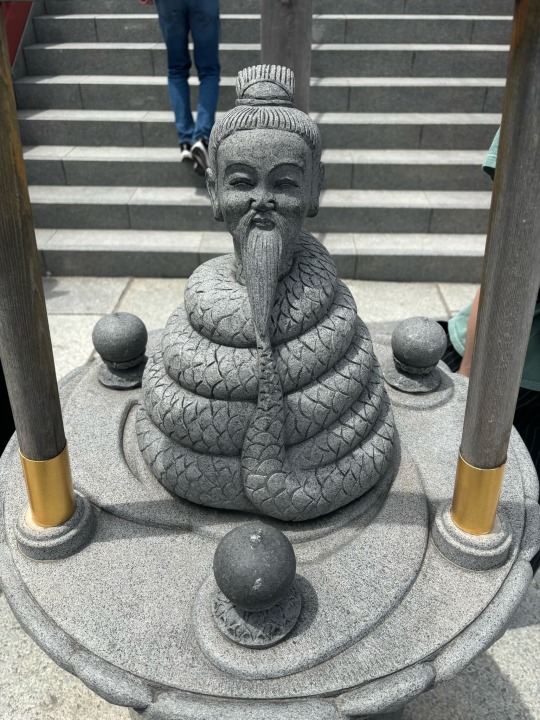
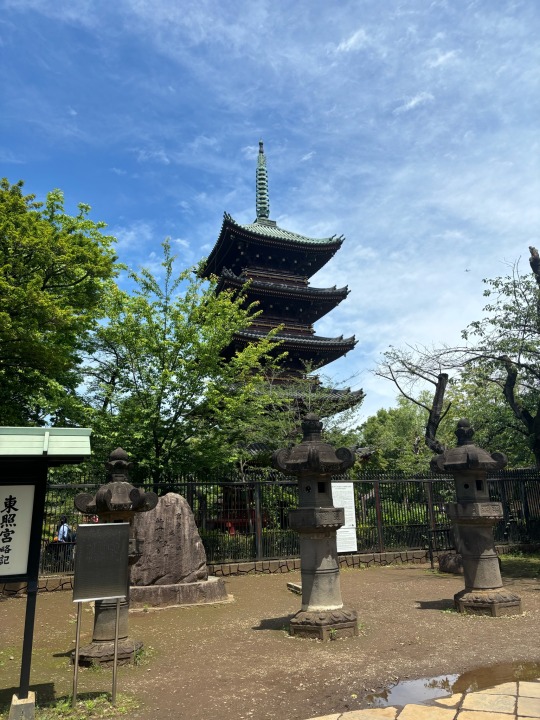
After walking through the park, our next stop was the Tokyo National Museum! The museum was probably one of my favorite stops of the trip so far, there were so many cool pieces of history on display, alongside some truly breathtaking art.

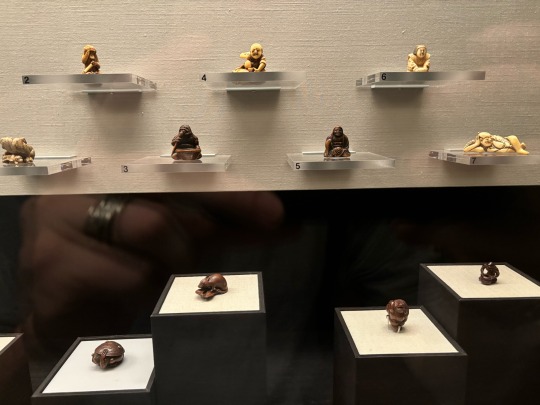
My favorite piece in the museum was probably a family heirloom bow of the Sereta samurai clan (pictured below.) The skill and strength required to effectively use such a weapon must have been truly astounding. Its size and striking red color really drew me in.
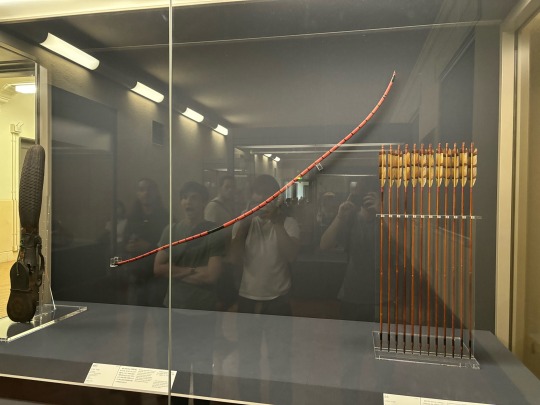
After exploring the rest of the museum, we left for Akihabara where I had a really good pork bowl for lunch. After a little bit of exploring and a little time spent in the arcade, I headed back to Shibuya to do some shopping. I went in a few stores, but once again Tokyo's fashion district prices strike again (I'm trying to ball on a budget and Tokyo is not working with me I'm afraid.) Walking around with some friends was still fun though and after some ramen for dinner, I hopped on a train back to Hotel Edoya (where I wrote my WHOLE last blog before tumblr deleted it out of existence forcing me to rewrite it.) Overall, another long but great day in Tokyo!

Academic Reflection
The Tokyo National Museum had a number of haniwa on display. Haniwa are terracotta figures, often depicting warriors that were made to be used in funerary rituals during the Kofun period of ancient Japan. These figures of humans, animals, common objects, and more would be buried alongside warriors. I feel extremely lucky to have been able to see some of these ancient relics with my own eyes. One particular haniwa that stood out to me at the Tokyo National Museum, was one of a chicken. Only the head remained intact after thousands of years but the craftsman ship was still very well done. To be able to craft such a precise object so long ago with so few reliable tools was very impressive to me.
Walking around Akihabara, the moe culture heavily discussed by both Azuma and Saito was palpable. There were characters on every building and they were advertising anything and everything. Many of these character's designs also lacked any concise narrative, incorporating seemingly random elements into their character designs for no apparent reason. There were also a number of people who I would perceive as "otakus" at a passing glance, reinforcing the sentiments of Saito. However, many of them seemed polite and were making their best efforts to keep to themselves.
3 notes
·
View notes
Text
9

A short piece as Lucifer makes sure that Kaylin get safely to her suite, even if mentally she is a mess..
Lucifer walked the old and empty halls that had once been his residence as he escorted Kaylin to her chambers, their footsteps softly echoing off the stone walls and floors that quietly surrounded them as if a tomb. In a way he guessed that was a fitting comparison. The halls they were walking now were relics of when he had ruled and been King. Just a few short years, yet seemingly a lifetime ago. Now the memories and objects that were within these walls were like funerary objects left to symbolize his reign and celebrate that life.
Kaylin was still trembling next to him as they walked, his arm around her shoulders at times the only thing that kept her upright. He didn’t have to ask what had happened at her father’s castle, he knew. The silver and obsidian pieces that she wore had connected her to him the instant that she had put them on. The rage that was burning within him would not be quenched till his son’s blood flowed like water around him. From his grandson’s reaction to seeing Kaylin and Asher, he would not be the only one to greet Damien with a less than friendly welcome should he show up at the Palace. If he knew his son, and he did all too well, the confrontation would be soon and it would be epic. They should all prepare for war.
Soon they came to the doors of the suite that had always been, and always would be, hers. Everything was as it had been left the last time that she had visited, even though it had been a few years prior. She had come since he had been freed from his confinement on the wall of the ballroom, but had not stayed as she had when he ruled. Their relationship slightly evolving with the fallout with her father due to the rise in power of Abbadon and Abriella at the time. He had feared for her then, and it seemed with very good reason. There were few times when Lucifer hated being right, and this was one of those times.
“Here, my darling, everything is as it should be. Asher will be along shortly, I am sure. Until he is, is there anything you need? Anything at all that I can help with?” Since they left the gardens, Kaylin had made not a sound, and he worried for her. To not only have endured the beating she had received, but to know that Asher had been tortured by her father…he did not know how that was affecting her. While they have may have thought it a secret, it was obvious to anyone with eyes what they truly felt towards one another. All it took was to see them around one another for a few moments and you could see it in their eyes as at they looked at one another, in the way the light touches that they exchanged, probably without even realizing it, and the way that their voice slightly changed when they spoke to one another. If you knew them, it was so obvious that you would have had to try hard NOT to see it.
Kaylin’s head lightly shook as she finally raised her eyes from looking at the polished marble floors to look at his worried brilliant blue eyes. “No, papa. I don’t even know what I would ask for. I…” she trailed off. What did she want? How did she feel? Could she even say herself? She wasn’t sure. “I just want to know Ash is ok. Daddy…he..” Her breathing started to get erratic again as the memory of how he looked when she had found him in that cell flooded her mind once more and threatened to destroy her. Blood…there had been so much blood…the floor painted golden yellow from it, and Asher’s pants had been staine from it as well. Because of her, all because of her, he had almost been killed.
“He is fine. Mithos and Arioch are both strong healers and were there as soon as I was. They are just making sure that there is nothing the Seraph demons missed. I assure you, he will be with you shortly, darling.” Kaylin was pulled tight to Lucifer’s chest, a kiss placed atop her head. “And your father will never hurt you again. Never. Again.” His eyes closed and he made a vow to his father that he would avenge what had been done. A promise, that unlike the ones he had broken at the dawn of time that had damned him from Heaven, this one he would not break.
“It’s my fault. Papa, he’s going to hate me. I wanted him to shift from his dragon form. To lay with me in the bed. If he’d stayed a dragon…” Her voice broke as she sobbed against his shoulder. Her hands fisting in the robes he was wearing as she clung to her grandfather as if letting go of him would end her existence. Lucifer was her only tether to reality, to sanity, to any hope for redemption for almost ending the man that she loved, had loved since childhood but had denied because….because…she couldn’t even explain why she had anymore. Foolishness? Pride? Ego? To prove that she needed no one? But she did. She needed him. “Then your father would have lost his mind over it at a later time. Do you think that I did not know this would happen? Why do you think I had those pieces made and gifted them to you?” Lucifer’s voice was quiet, comforting, and most unlike what those who knew him were used to, it was loving. He held the trembling Kaylin to him, wishing with a desperation that rivaled only his to reconcile with his father, that he could ease her pain and erase the worry in her mind that Asher would abandon her after what happened. He knew the male and, unless he had sorely misjudged him, the male was probably feeling he’d failed her as much as she felt she’d failed him. “You did nothing for him to hate you. Do you think he would have shifted if he did not want to? He was aware of the dangers of being caught with you. Neither you nor he are responsible for the evil actions of my son.” He could not bring himself to call Damien her father, for the male did not deserve such title. Unfortunately he had sired the male, so would forever be burdened with that knowledge. Kali be damned.
#the imperium chronicles#my writing#web of lives#fantasy#fiction#dark fantasy#demons#dragon#trauma#pain#upset#violence#sadness#worry#family#love
7 notes
·
View notes
Text
A deep-dive on the design of a Mega Man X boss who dies after two scenes
Does anyone remember Incentas? He dies wrestling a sexy gambler in Mega Man X: Command Mission. whatever.
Most Mega Man X bosses are anthropomorphic animals or plants or mythical creatures, but wtf is Incentas supposed to be? He's got six hands and three faces, and his body is made of energy.

Well, I have deduced an answer!
First of all: in his boss fight, Incentas has three different elemental forms. They're called Burning Genie, Lightning Genie, and Dancing Genie. So I guess he's a genie, but there's a lot more to him than that.
See, Incentas' three forms each use different parts of his body: 1 mask and 1 pair of hands. These faces and hands are all given unique names in his concept art, translated by Udon for the Complete Works book.
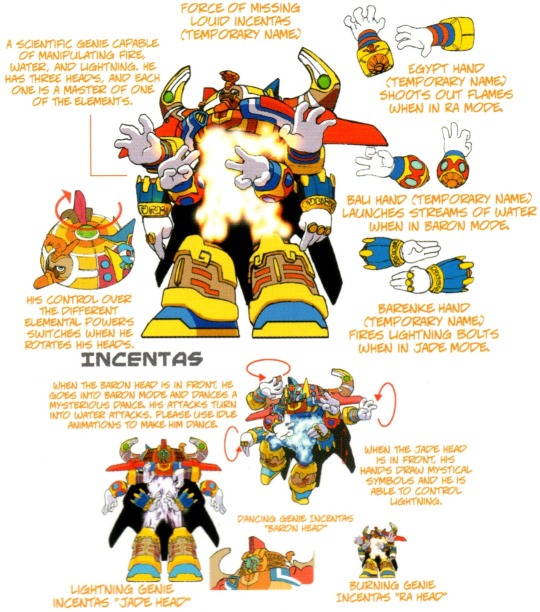
Burning Genie form uses the Ra Head and Egypt Hands.
Lightning Genie form uses the Jade Head and Barenke Hands.
Dancing Genie form uses the Baron Head and Bali Hands.
You may immediately notice that there's a theme in Burning Genie's limbs: Ra is an Egyptian god of the sun, connecting this form to ancient Egypt. He even has big calm eyes, a beard, and an uraeus (the cobra headpiece) like the famous Mask of Tutankhamun.


That's neat. But what about his other two forms?
Lightning Genie has the Jade Head and Barenke Hands... the reference here is not immediately apparent. Let's look at the original Japanese concept art:

The word Barenke is written (パレンケハンド) in Japanese. You know what else can be written that way? Palenque, an ancient Maya city-state located in modern-day Mexico. This reference was totally lost in translation.
It's compounded by the Jade Head, since one of the most famous ancient Mayan relics is the Death Mask of Pacal the Great, which was discovered in Palenque. Said death mask is made of jade, perfectly aligning the head and hand inspiration. His Jade Head has the same green color and kinda sad-looking eyes. Also, it's a royal funerary mask like the previous one.


Now for the last one: the Dancing Genie with its Baron Head and Bali Hands. We get a big hint with the word Bali, a province of modern-day Indonesia. That's a third ancient kingdom for Incentas. But what is the Baron Head supposed to be?
Again, it was lost in translation. Baron is written (バロン) in the Japanese concept art, which is also the same way that the Balinese Barong is spelled. The Barong is a panther-like character, a king of good spirits which is included in the traditional Barong dance with a huge mask. Hence this form's Dancing Genie title, and the round eyes and tusks of its Baron Head.
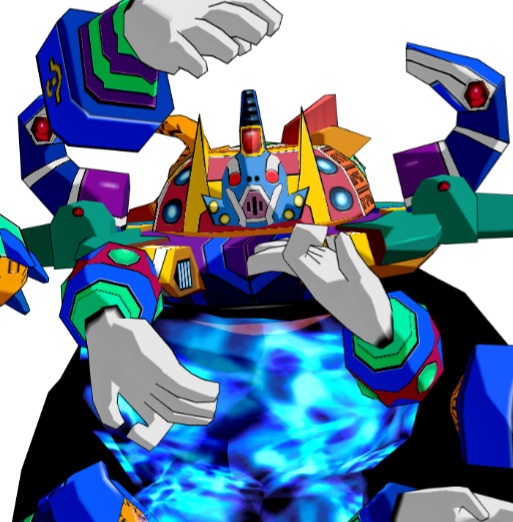

These three inspirations - Egypt, Maya, and Bali - show that Incentas is really based on royal masks from ancient civilizations. All three were once powerful kingdoms with long-lasting relics, architecture, and customs. He really doesn't have much to do with genies at all, as djinn are from pre-Islamic Arabian cultures.
For this reason, I find that the alternative translation of Incentas - "Ancientus" - is a much more fitting name. That's what he was called in the game's E3 demo, so why was his name was changed? Possibly because it's a bit difficult to pronounce in English.
Speaking of his name, in the Japanese concept art he's called "Rouid Ancientus" (ルイード・エンシェンタス). This is likely a draft name, since his fellow bosses have some leftover draft names in their concept art too. But still, what could that first word mean? Could it be a corruption of the English word ruined, reflecting his ancient inspirations? I'm still so curious.
Anyway, Incentas Ancientus has an underrated design, and I hope his designer knows that we acknowledge and appreciate all their hard work and research.
#mega man x#mega man x command mission#incentas#ancientus#spider#x#zero#gimialla mine#concept art#translation#mega man
6 notes
·
View notes
Text
i just remembered at 3am that reboot calendiles exists. PLEASE help. i don’t even remember what it was like before we got that insane improbable lightning strike of joyful narrative catharsis + an ending that jenny DESERVED + a canon that left her ALIVE. GOD
11 notes
·
View notes
Text
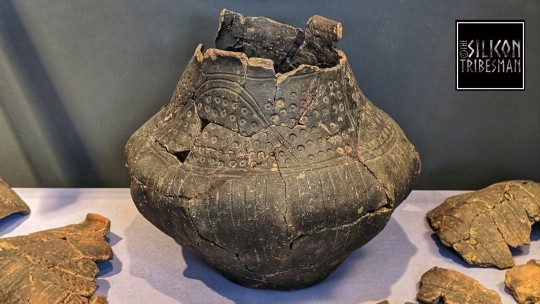
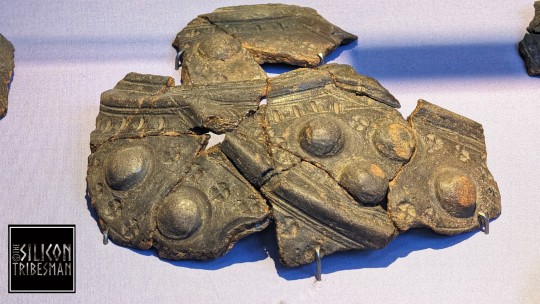
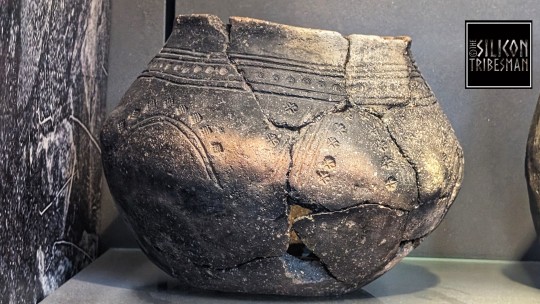
Anglo-Saxon Funerary Pottery, The Collection, Lincoln
#anglo saxon#pottery#pottery fragments#ancient cultures#ancient craft#ancient design#ancient living#funerary urn#archaeology#relic#fragments#Lincoln#patterns
129 notes
·
View notes
Text
Who Lives Ten Thousand Lives May Die Ten Thousand Deaths
(This is Laneth's turn 16, but to establish the context we're backing up to turn 14 to set the scene a bit.)
In the dewy sunrise of humanity, Pai was an important town, the birthplace of the Order of the Last Hearth and home of its first works. Today in these twilit hours of the Second Age, it is a sort of relic, a town whose necropolis outstrips its habitations, home to many illustrious dead. At the centre of the necropolis lies Teiri's Retreat, the tomb of the Order's founder -- long empty, pilfered for relics, but still a sacred site of pilgrimages. But Pai itself has become a town embalmed: it consists now in the schools and monasteries of the Order, the necropolis, and the necessary housing to support tourism, pilgrimages, and new construction. It could have stayed this way forever, a testament to the funerary arts of the Order, if not for the intrusion of new kinds of life, and new kinds of death.
The first sign of the trouble to come, years before the threat that now wracks Incarien, was an omen from abroad: in the coastal cities of Incarien, many tombs had shattered at once, and given up their dead. The Order sent emissaries to Pai, where the elders concluded that this was a sign that their gifts had been neglected, and they quickly dispatched teams to Wera, Unimaa, and other cities struck by the omen, to preside over rites that might satisfy the unquiet dead. Through this, the Order, already rich, enriched itself further. None could argue that the funerists of Pai were the utmost masters of their craft.
But not all were pleased with this resolution: for those watching carefully, the breaking of the tombs was only one of a hundred omens sent by the god Haebarik to warn of worse fates to come. Among those left uneasy was Armannen, a humble landscaper of tombs learning her craft in Pai, who had heard sailors' whisperings of strange tidings off the coast -- odd debris washing ashore, ominous sightings of Kuollut Kulma, that isle legendary to the order, and stranger things besides. By the will of the gods, she followed her disquiet to Wera at the moment of the Deep One Kǎlkayer's attack, and only then realized the messager the gods had been sending to humanity.
Beseiged, Wera was cut off from northern Incarien for more than a year, and even then, trade was limited: a city beseiged can offer little but glory, and many sailors feared Kǎlkayer's forces. But gradually, trade and travel resumed; not only to Unimaa and the rest of free Incarien, but to the Azure Reach, ancient ally of Wera and also a stronghold of the Order of the Last Hearth. And so Armannen heard news of the world.
The Last Order rose to defend its tombs, considering the Deep One's animation an affront to the dead, and it turned its skill with stonework to help build fortifications; but it did little more in this period, and Armannen grew frustrated, resenting that the Order had grown rich by failing to heed the gods' omens. For years she brooded in the midst of the stalemate, until at last she devised a scheme that was a match to her talents: from the Order's branch in Palk she secured a cutting of that rarest of plants, the white-leafed bush of the womb of Laeran, which held the secret to the ultimate art of killing: the Noble Poison, bane of kings and demigods.
It was not hard to gather the sympathetic links to Kǎlkayer needed to cultivate his bane: the Bone Wastes were strewn with them. But it was, all the same, a difficult task, as only passion and intrigue could feed these plants. Armannen and a few co-conspirators of the order returned to Pai, supposedly to assist in its defenses, and from there, they cultivated the plant in secret, filling tombs and caverns with it, feeding it by the secrecy of their work.
And much time passed, and Wera held, and Armannen's conspiracy did its work in secret; and she did not live to see it reach completion. But eventually, it was completed. One day, when few humans alive still remembered the time before Wera was beseiged, the descendants of those first conspirators set sail back to Wera with a hold full of Noble Poison, lethal to Kǎlkayer but harmless to all others.
A Deep One cannot be killed entirely by killing its drones; but the drones can be killed, and it can be made to feel death. And so, with this poison in hand, the people of Wera were at last able to push out into the wastes, strewing the land with it, devastating the skeletal forces near the city. Chastened by the pain of death, Kǎlkayer pulled away from Wera -- not enough to open a land route to the rest of the continent, but enough to give its forces room to manoeuvre. With this weapon in hand, the stalemate at last is broken, and the frustration and grief of a hundred years' siege spills out into Incarien once again.
3 notes
·
View notes
Text



given the relic "wooden hairstick" i believe that this little hairpin on the back of blade's hair is meant to pair with it & to me it shows that when he first awoke again , blade attempted to fashion his hair into a ji ( the bun featured ) using the twig as a zan ( hairstick ) . he likely gave up once his hair starting getting very very long , & continues to let it grow as a form of mourning ( see : confucian funerary mourning rites )
5 notes
·
View notes
Text

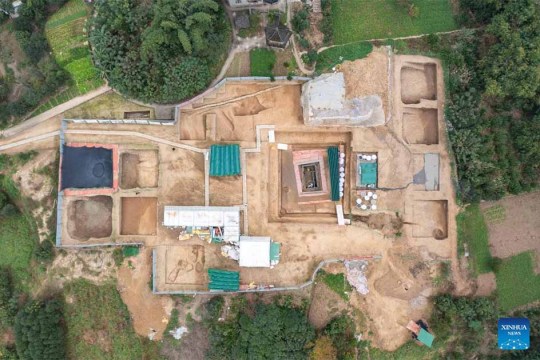
A Rare Western Han Dynasty Tomb Found in Southwest China
A well-preserved tomb, dating back to the Western Han Dynasty (202 BC-25 AD), with a clear recorded year has been discovered in Wulong District of southwest China's Chongqing Municipality, the Chongqing Cultural Relics and Archaeology Research Institute said Tuesday.
This archaeological project is a rescue excavation and protection work carried out to forge cooperation with the Baima project, the last of a cascade of hydropower stations on the section of the Wujiang River in Chongqing.
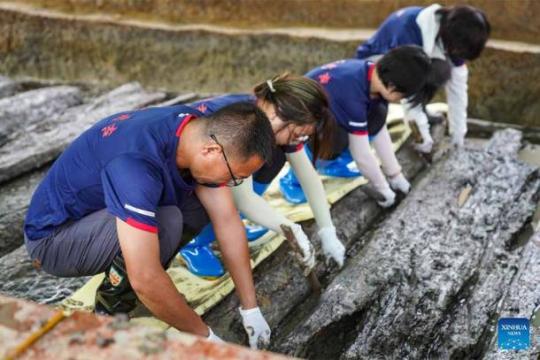

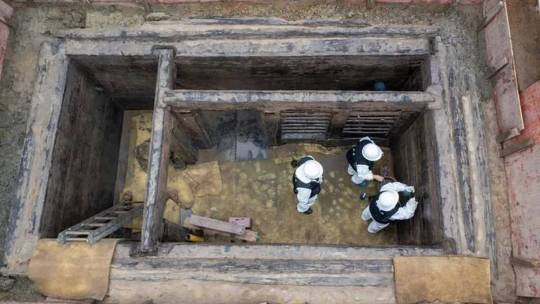

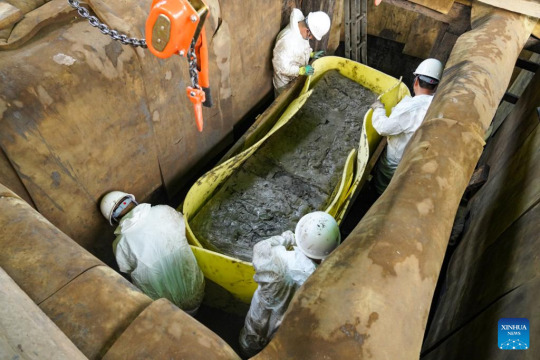
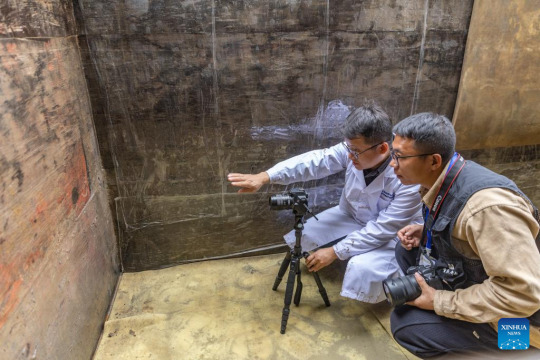
With the approval of the National Cultural Heritage Administration, the Chongqing Cultural Relics and Archaeology Research Institute set up a work team of more than 20 people from different archaeology research institutes and universities to excavate the site in March this year.
According to Huang Wei, the leader of the archaeological project, a collection of tombs dating from the Han Dynasty (202 BC-220 AD) to the Six Dynasties period (222-589) were newly discovered as part of this project. Among them, the tomb dating back to the Western Han Dynasty was the most important, and more than 600 precious cultural relics such as lacquerware, wood ware, bamboo ware, pottery and bronze ware were unearthed from the tomb.
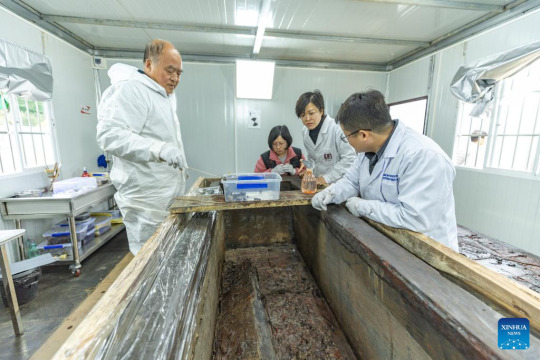
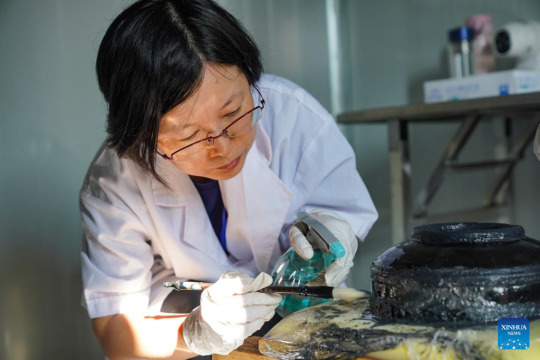
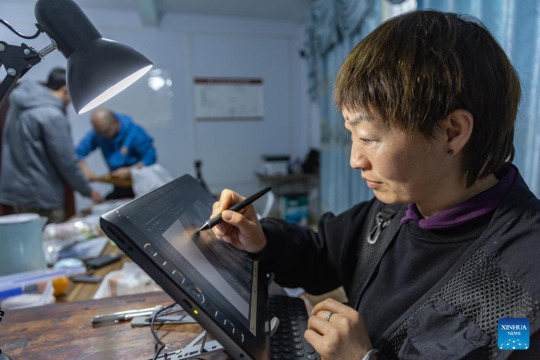
Due to the tomb being filled with water throughout the year, it remains undisturbed and unharmed, and the funerary objects in the tomb are well preserved.
"What is exciting about this discovery is not just the large number of unearthed artifacts but also the list of burial items containing a precise year record, which has been verified as 193 BC, providing clarity on the tomb's burial timeframe. An unearthed jade ware from the tomb shows the prominent position of the tomb owner," Huang said.
The list of burial items found in the tomb is complete and clearly records the name, quantity and size of the funerary objects.
The tomb discovered this time is the one containing the largest quantity of lacquered wood and bamboo wares ever found at one time in the upper reaches of the Yangtze River in China, said Bai Jiujiang, head of the Chongqing Cultural Relics and Archaeology Research Institute.

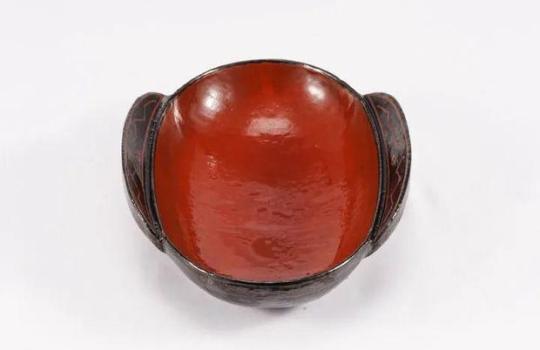
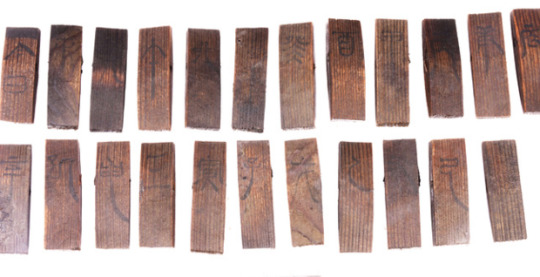
Based on publicly available information, it is also the earliest tomb of the Western Han Dynasty found in China, with a clear recorded year, according to Bai.
This is a major archaeological discovery regarding the Qin and Han Dynasties in the Wujiang River Basin, offering physical evidence and important basic research materials for future study of burial customs and the comparative analysis of famous artifacts from the early Western Han Dynasty, according to the archaeologists.


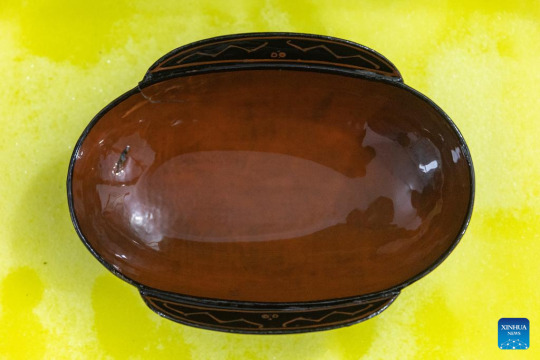
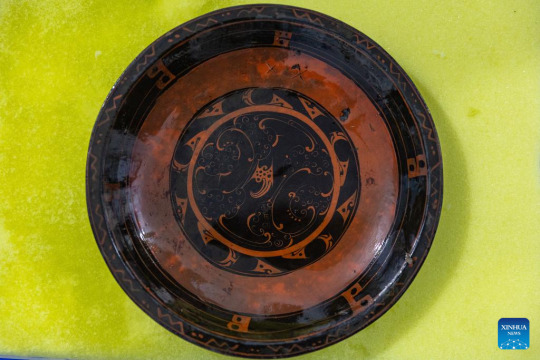
#A Rare Western Han Dynasty Tomb Found in Southwest China#Tomb Holding Hundreds of Ancient Relics Unearthed in China#Western Han Dynasty#ancient tomb#ancient grave#grave goods#ancient artifacts#archeology#archeolgst#history#history news#ancient history#ancient culture#ancient civilizations#ancient china#chinese history#chinese art
63 notes
·
View notes
Text


tag screenshot 1: #see also: i could write you a whole essay on the plush elder dragon trinkets #<- prev I would be thrilled to read that #I didn’t even realise there could be meaning behind those stats and will now look at the wiki page for every plush dragon #guild wars 2
tag screenshot 2: #yes yes yes and also UR TAG ABOUT THE STUFFIES #yes please write it cus i feel the same #i wish so badly theyd turn them into homestead decos #or something bc their icons are so cute and i love the flavor text
YES OKAY this took me a bit to get back to but!! elder dragon infodumping!!!! as fair warning, i am not an expert on buildcraft, but i’m trying my best.
anyways, i think all of the dragon plushies are actually really interesting viewed as deliberate character choices for each of them, both in terms of general vibes and how those stat combinations work. here are all of my thoughts, in story order:
zhaitan has grieving (power, condition damage, precision, ferocity) stats. first off, in the game, grieving stats are deeply intertwined with relics of the dead, beyond just the melancholic name. most of the gear that comes preloaded with grieving stats is in some way associated with death and burial— funerary armor and weapons and trinkets from the tomb of the primeval kings, the elegy armor set from season 4, and halloween weapons like the carapace of chaos. intact elegy mosaics are literally tiles that were originally laid inside of the tombs of monarchs, displaying representations of their triumphs in battle (which is why you receive them from bounties and metas). there’s a very specific vibe that grieving gear comes packaged with, and while it’s not necessarily orrian, it is very much in theme with zhaitan’s interests and domain. and, more than anything, zhaitan has everything to mourn. “like all ruins, they become what they are, not what they held” is a reflection on orr, but it’s an insight that also suggests a family dynamic that has been left to degrade. zhaitan’s death was always going to be the beginning of the end, and it’s implied that he had always accepted that.
as a stat combination, grieving is a hybrid power/condi set where your conditions don’t last very long, but you can maximize bursts of damage output by focusing on crits. necromancers have always been the favored profession for grieving builds— scourge (at least historically) does really well with it in world vs world, and grieving gear is still used on condition reaper builds, where most of its condi damage comes from maximizing bleeds on a grandmaster trait and it otherwise prioritizes power damage. giving it to the undead freak seems like the obvious choice. but also, the stats and the playstyle feels appropriate for zhaitan in other ways. he lacks the defensive toughness/vitality attributes of his family, and is in some ways the weakest dragon; caught off-guard by the pact assault and blinded and starved. like, he can cause massive destruction through direct assault (see: claw island), but it’s easy to take him down once you know where his weaknesses are (and any survivability associated with grieving builds is less about the stats and more just that you’re probably playing necro).
also, it feels fitting that zhaitan is the halloween dragon. i don’t really have much to say about that other than the obvious— during halloween, the barrier between tyria and the mists weakens, and the underworld is within reach through the mad king’s realm. so it’s death, death, death.
mordremoth uses trailblazer’s (toughness, condition damage, vitality, expertise) gear. this is one of the heart of thorns’ prefixes, although nothing really comes in trailblazers stats besides the gear you get from its crafting recipes. it’s kind of an interesting one, in that i have no idea who the trailblazer archetype is supposed to be. commander’s gear is the commander (duh), vigilant armor is associated with the vigil and laranthir, viper’s is for the forgotten, wanderer’s is for the exalted, and minstrel’s gear is largely associated with the virtues of the bardic profession. i would almost venture to guess that trailblazer’s is a prefix that is meant to represent the hylek, or even the jungle itself— first obtainable in tangled depths as you venture deeper into mordremoth’s nest. either way, the jungle provides.
(also, fun fact, trailblazer’s gear is crafted with maguuma lilies, and one of the only other uses for them is in crafting an orb of natural essence when reforging caladbolg. haha.)
trailblazer’s gear is surprisingly solid all-purpose condi gear for open world and wvw, having a lot of personal durability without sacrificing too much condition damage. mordremoth is a tanky guy who bites hard— he and zhaitan are similar beasts in fights like harvest temple, loving poison AOEs and fears (so many poison AOEs), but mordremoth throws his own weight around more, with headbutts and crowd control skills. mordremoth is the most hardened of the six of them with that toughness, as well. he’s a character that sees the world in terms of domination and submission, but also as an existence that requires the constant challenge of survival. anything in the jungle can eat you if you can’t defend yourself.
i think it’s interesting that you get plush mordy during lunar new year, and plush ess during SAB. for the longest time, i could not figure out the reasoning for that, especially since soo-won is tied so closely to cantha— and then it hit me. the heart of thorns campaign lasted from 30 zephyr to 74 zephyr, meaning the initial assault and mordremoth’s call would have been around the equivalent of january 30th, right around when the new year starts. his plush is commemorating that. discovering this while writing all of this did make me shout and i am now sharing it with you.
kralkatorrik uses diviner’s (power, concentration, precision, ferocity). this is one of two stat combinations introduced during season 4, alongside plaguedoctor’s gear for the joko half of the season, and it has a lot of personal connections to kralky: frodak steelstar (the ascended namesake) assisted glint in crafting the original dragonsblood spear, diviner’s gear is crafted with branded masses, and dragonsblood weapons in-game are diviner’s pieces. there’s also perhaps the obvious connection between “divination” and the prophetic sight that kralkatorrik, glint, and aurene all possess. it’s kind of kralkatorrik, it’s kind of glint, and it’s all family trauma all the way down.
not a lot of meta power boon support builds actually use diviner’s gear, though, because a lot of them reach concentration cap without it. whatever. it’s more interesting that kralkatorrik is a boon support build. concentration as a defining attribute gives him an almost mystic vibe, in line with both the visions he’s had in the past and the connection to the mists he gains from consuming part of balthazar. he’s wise beyond his years, but also hurting tremendously under the burden of all of the magics inside of him. he’s still primarily a dps build, because destroying everything will cease the torment inside of his head, but he has further insight into the weight of the cycle, and he does find ways to support the commander and aurene in moments of clarity.
finally, plush kralk is available during the festival of the four winds, which is both a summery festival and one largely centered around the zephyrites— so again, it all circles back around to glint.
jormag’s plushie uses bringer’s (expertise, precision, vitality) stats. it’s one of the two prefixes associated with wintersday, being crafted with snowflakes and found exclusively on wintersday rewards outside of crafting. hooray hooray. admittedly there isn’t much going on with bringer’s gear outside of tixx and wintersday. like, okay, jormag is associated with snow, and icebrood corruption is often framed as a gift bestowed upon the lucky. what else is there to say? but i do think you could also draw parallels between jormag’s vision of the world encased in endless winter and the original spirit of wintersday, grenth and dwayna (child and mother, even!) fighting over the changing of the seasons and their cycles.
bringer’s gear is uh… nobody really uses it because it’s not good. it has no damage or any real synergy between its stats. from what i understand, bringer’s gear is (in theory) largely best at focusing on non-damaging conditions— meaning you mostly use it as a supplement mixed with more damage-heavy pieces. i think the lack of damage on their stats is really interesting, both in contrast to primordus (and everybody else, really) and in that it highlights how jormag doesn’t like getting their own claws dirty in a fight if they don’t have to. they’re largely enabling somebody else’s ability to do damage on their behalf, like with ryland. the conditions that benefit the most from bringers are also generally non-damaging, movement-based conditions— such as, most fittingly for jormag, chill. it’s very much jormag’s style, and claw of jormag is always a never ending cycle of being chilled over and over again get me out get me out get me out—
as discussed, plush jorms is the wintersday collectible and there’s not much more to say about it. obvious pick. i think jormag can cloak the world in eternal winter if they want. my one additional comment is like, hey, side note, do you guys ever start thinking about how jormag’s blood canonically tastes like peppermint?
primordus, meanwhile, uses marauder’s (power, precision, vitality, ferocity) gear. of all of the prefixes, marauder has the least to do with primordus thematically out of all of the stat combinations— it’s associated with pirates and mariners, originally having a connection to grymm svaard from the sea of sorrows novel and in more recent times being retroactively associated with the aetherblades. the crafting materials don’t really resonate with primordus, nor do the characters associated with any related gear. this one, i think, is meant to be all about the actual use case for marauder’s gear, more than anything else. unless you could, like, maybe make some argument about naval marauding + barbed thorns (primarily dropping from mushrooms, mordrem, and treants/druids) suggest an association with draconis mons and the ring of fire, but that feels like a stretch to me.
so, marauder’s gear is about raw power damage, but it’s more protective than berserkers— its what you take if you just want to hit things until they’re dead, but you also don’t want to die immediately. he’s not tough, though; it’s a vitality build. he’s not mordremoth, who has armored himself against the world. primordus is soft under the surface, warm lava under volcanic rock— he can protect himself, but he doesn’t want to throw himself into fights until it hurts too much to do anything else. he’s a character that hides underground in the depths of tyria, and any destruction in his wake erupts recklessly when he’s provoked. now, that destruction comes in instantaneous, hard-hitting bursts, meteor strikes and wildfire blazes, but at least they’re over quick.
you can get him during dragon bash, which in its modern iteration is largely associated with the dragonstorm. and braham’s there in hoelbrak! braham’s his best friend! also, dragon bash and wintersday are on direct opposite ends of the year (june/july and december/january). that’s real balance, baby. although, i do tend to forget that dragon bash is considered a summer festival when its events are placed in the shiverpeaks.
lastly, soo-won uses ritualist’s (vitality, condition damage, concentration, expertise) gear. it’s one of the two prefixes added in end of dragons, and soo-won is deeply tied to cantha— it’s where the world, her world, started; and it’s where her world ended. you tie ritualist’s gear to spirit-workers who were pulling magic from the void of the mists long before the six arrived in tyria, when all we had were the dragons. additionally, the luxon weapons are ritualist’s gear, tying her to their traditionally-seafaring culture. i also think it’s fun to associate her with togo’s ascended gear, when togo is called the defender of cantha, something soo-won and kuunavang have similarly stepped up as in the wake of the tsunami following the rising of orr.
it’s our other boon support build, although it just feels different than kralkatorrik’s diviner’s set. i think that’s because ritualist’s isn’t really the direct condition-based equivalent of diviner’s gear, as it sacrifices power for additional vitality. it feels like we ultimately met a soo-won that has been divided into two, between the maternal character that she is— soft, protective, resigned to her mistakes— and the corrupting void that she has always carried inside of her. soo-won is, by all accounts, not a particularly violent dragon, not until the dragonvoid finally wraps its tendrils around her. (unless they’re planning some fun lore drops whenever we get the deep sea horror expansion). so, while kralkatorrik is primarily a dps character who happens to have boons, soo-won feels like a character who was originally more support-oriented, but now has more of a bite, one that’s been festering and threatening to spread.
plush ess is available during super adventure festival. we’ve already discussed why mordremoth is associated with lunar new year instead of soo-won, but i think it’s also fun to associate soo-won with SAB when she’s the most technologically-forward of the dragons, shedding her excess magic into the energized jade that powers cantha. i think soo-won could have been a gamer if joon gave her the opportunity.
dragons! rawr!
i’m always delighted when i realize the gw2 devs have done something playful with the stat combos on gear. right now i’m looking at the sinful weapons from SOTO for reasons, and you should’ve seen the big goofy grin on my face when i realized they gave the greed weapon (avarice’s command) celestial stats… because it wants a little bit of everything
also envy’s bite having vipers stats, despair’s lament and regret’s memory both having grieving, rage’s fist having berserkers…….. very cute 10/10
#i guess that really is the final sentence of the post. i don’t know what else to say#gw2#long post#…anyways. so… yeah! :3#i just think the dragons are neat.#i want to make a silly little joke about how i also have thoughts and feelings about the astral ward weapons BUT#this post took two weeks of my life i cannot do that again so quickly
128 notes
·
View notes